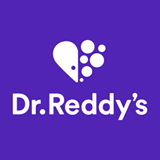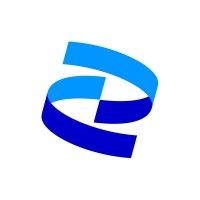预约演示
更新于:2025-05-07
Pfizer Global Manufacturing
子公司|Connecticut, United States
子公司|Connecticut, United States
更新于:2025-05-07
概览
标签
神经系统疾病
其他疾病
心血管疾病
小分子化药
疾病领域得分
一眼洞穿机构专注的疾病领域
暂无数据
技术平台
公司药物应用最多的技术
暂无数据
靶点
公司最常开发的靶点
暂无数据
| 排名前五的药物类型 | 数量 |
|---|---|
| 小分子化药 | 7 |
关联
8
项与 Pfizer Global Manufacturing 相关的药物靶点 |
作用机制 VDCCs阻滞剂 |
最高研发阶段批准上市 |
首次获批国家/地区 美国 |
首次获批日期2003-10-31 |
靶点 |
作用机制 5-羟色胺重摄取抑制剂 |
原研机构 |
非在研适应症- |
最高研发阶段批准上市 |
首次获批国家/地区- |
首次获批日期1990-01-01 |
作用机制 L-type calcium channel阻滞剂 |
在研机构 |
原研机构 |
非在研适应症 |
最高研发阶段批准上市 |
首次获批国家/地区 英国 |
首次获批日期1989-03-01 |
1
项与 Pfizer Global Manufacturing 相关的临床试验EUCTR2004-000954-22-LV
A 1-Year Open-Label Safety Extension Study of Pregabalin (CI-1008) in Patients With Anxiety Disorders
开始日期2004-09-23 |
申办/合作机构 |
100 项与 Pfizer Global Manufacturing 相关的临床结果
登录后查看更多信息
0 项与 Pfizer Global Manufacturing 相关的专利(医药)
登录后查看更多信息
3
项与 Pfizer Global Manufacturing 相关的文献(医药)Chimica Oggi
Process analytical chemistry as a tool for green chemistry. Perspectives from an API plant
作者: Berry, L. ; Sistare, F. ; Mojica, C. A.
Cleaning validation by direct swab NIR analysis
作者: Grout, Bronwyn
Journal of Process Analytical Chemistry
A chemical sensor based scheme to evaluate packaging containment effectiveness. Part 2: scale-up and qualification of the inspection scheme
作者: Webster, Gregory K. ; Farrand, Douglas A. ; Litchman, Mark A.
100 项与 Pfizer Global Manufacturing 相关的药物交易
登录后查看更多信息
100 项与 Pfizer Global Manufacturing 相关的转化医学
登录后查看更多信息
组织架构
使用我们的机构树数据加速您的研究。
登录
或

管线布局
2025年09月30日管线快照
管线布局中药物为当前组织机构及其子机构作为药物机构进行统计,早期临床1期并入临床1期,临床1/2期并入临床2期,临床2/3期并入临床3期
临床前
2
5
批准上市
其他
1
登录后查看更多信息
药物交易
使用我们的药物交易数据加速您的研究。
登录
或

转化医学
使用我们的转化医学数据加速您的研究。
登录
或

营收
使用 Synapse 探索超过 36 万个组织的财务状况。
登录
或

科研基金(NIH)
访问超过 200 万项资助和基金信息,以提升您的研究之旅。
登录
或

投资
深入了解从初创企业到成熟企业的最新公司投资动态。
登录
或

融资
发掘融资趋势以验证和推进您的投资机会。
登录
或

Eureka LS:
全新生物医药AI Agent 覆盖科研全链路,让突破性发现快人一步
立即开始免费试用!
智慧芽新药情报库是智慧芽专为生命科学人士构建的基于AI的创新药情报平台,助您全方位提升您的研发与决策效率。
立即开始数据试用!
智慧芽新药库数据也通过智慧芽数据服务平台,以API或者数据包形式对外开放,助您更加充分利用智慧芽新药情报信息。
生物序列数据库
生物药研发创新
免费使用
化学结构数据库
小分子化药研发创新
免费使用

